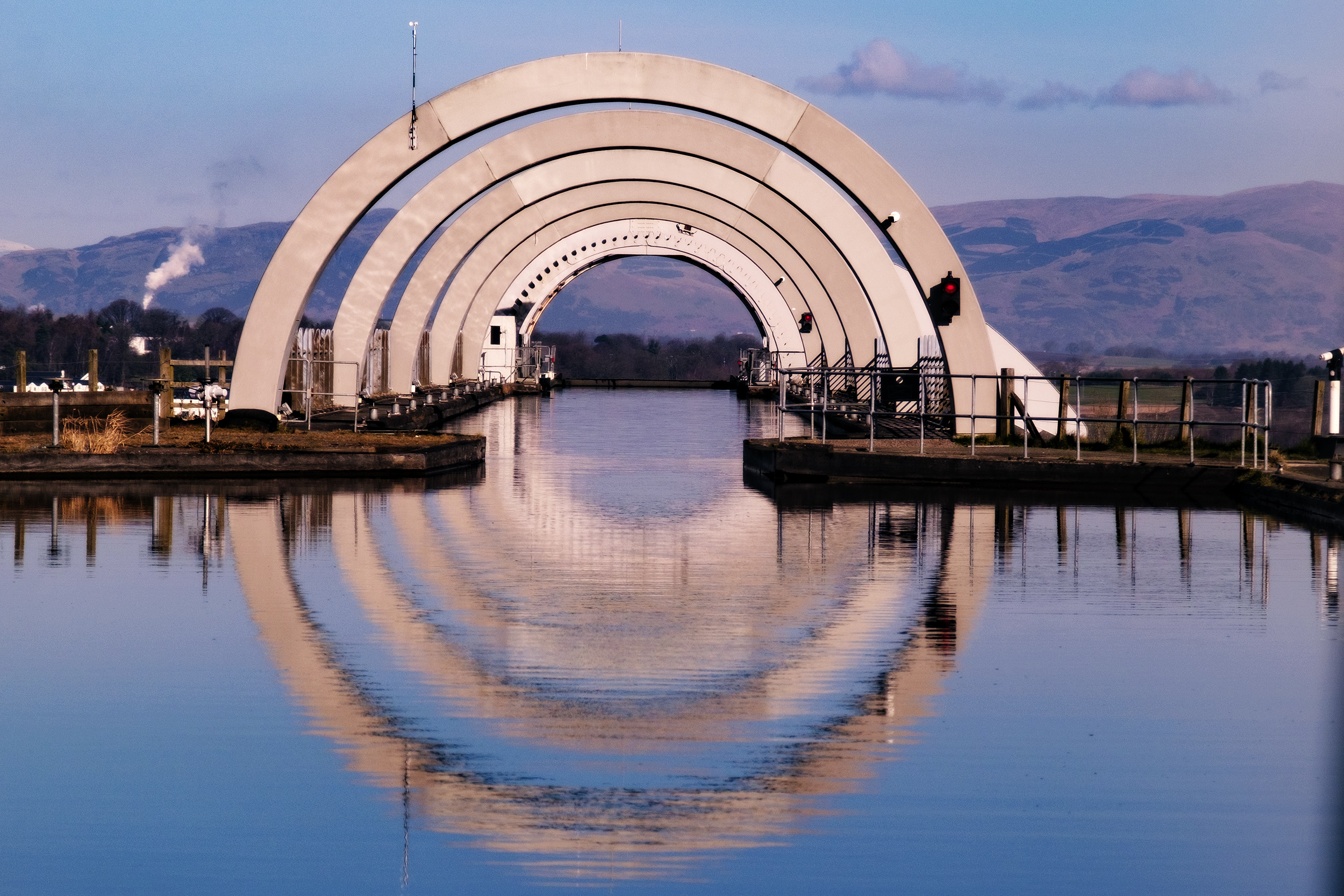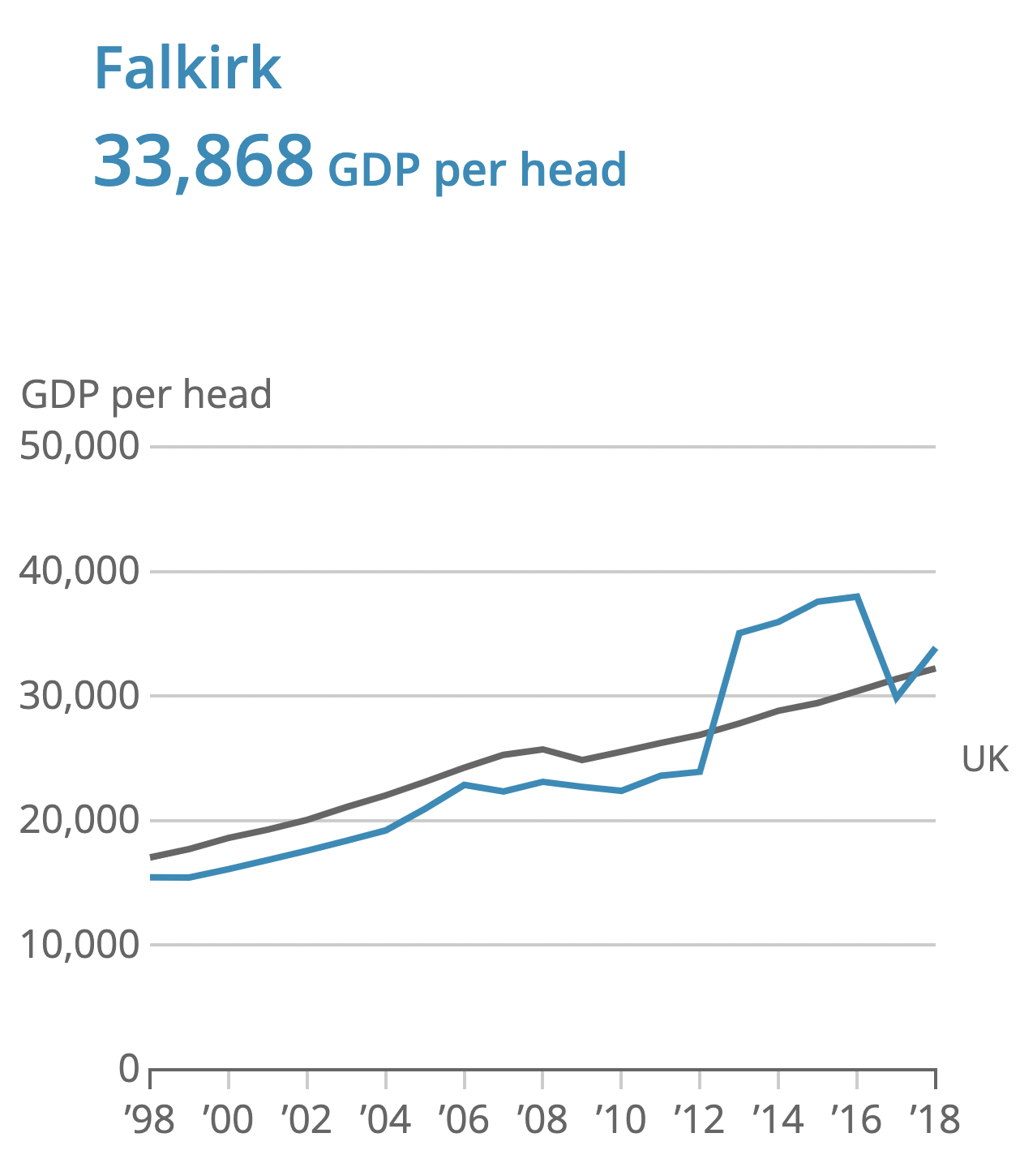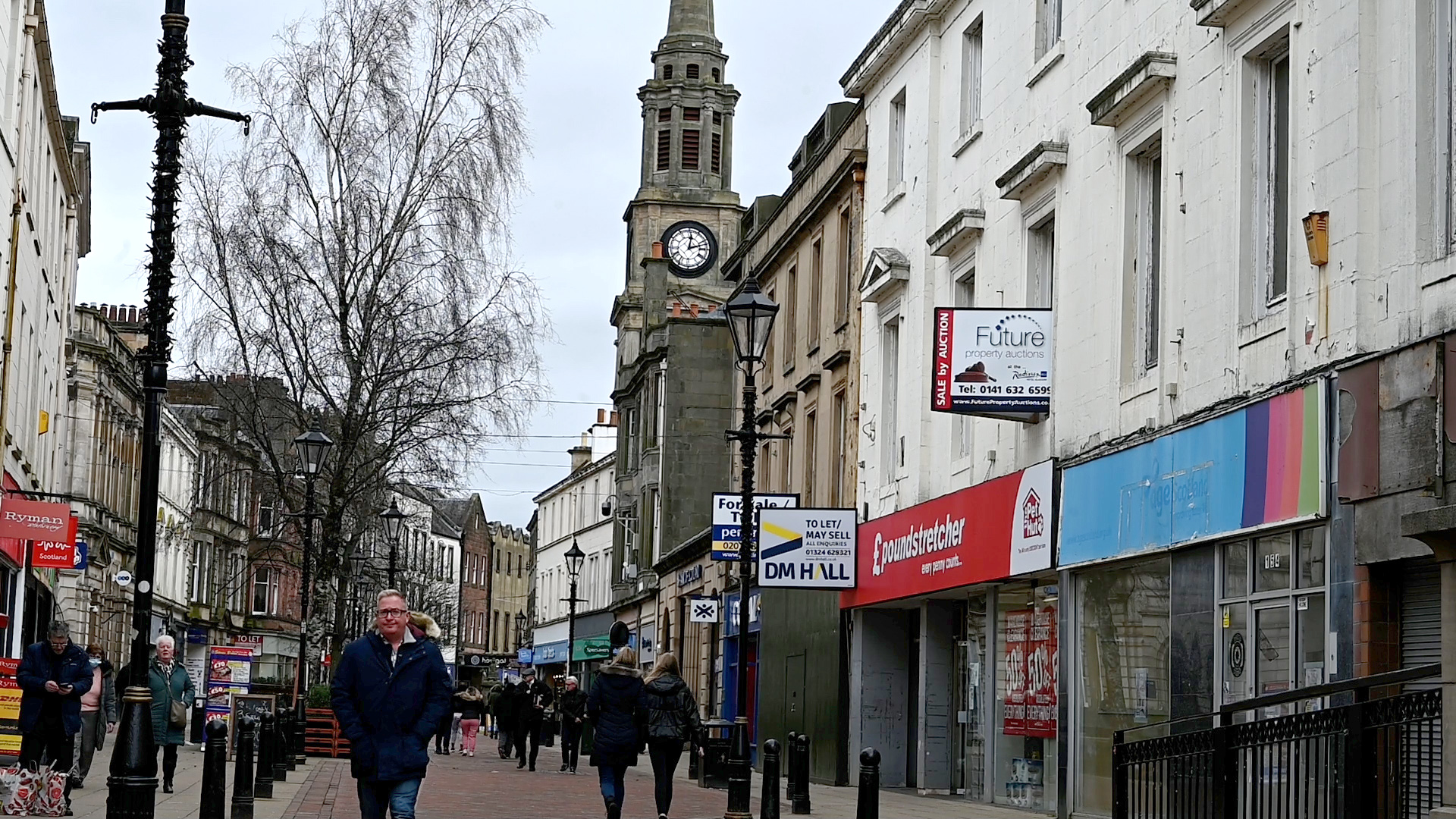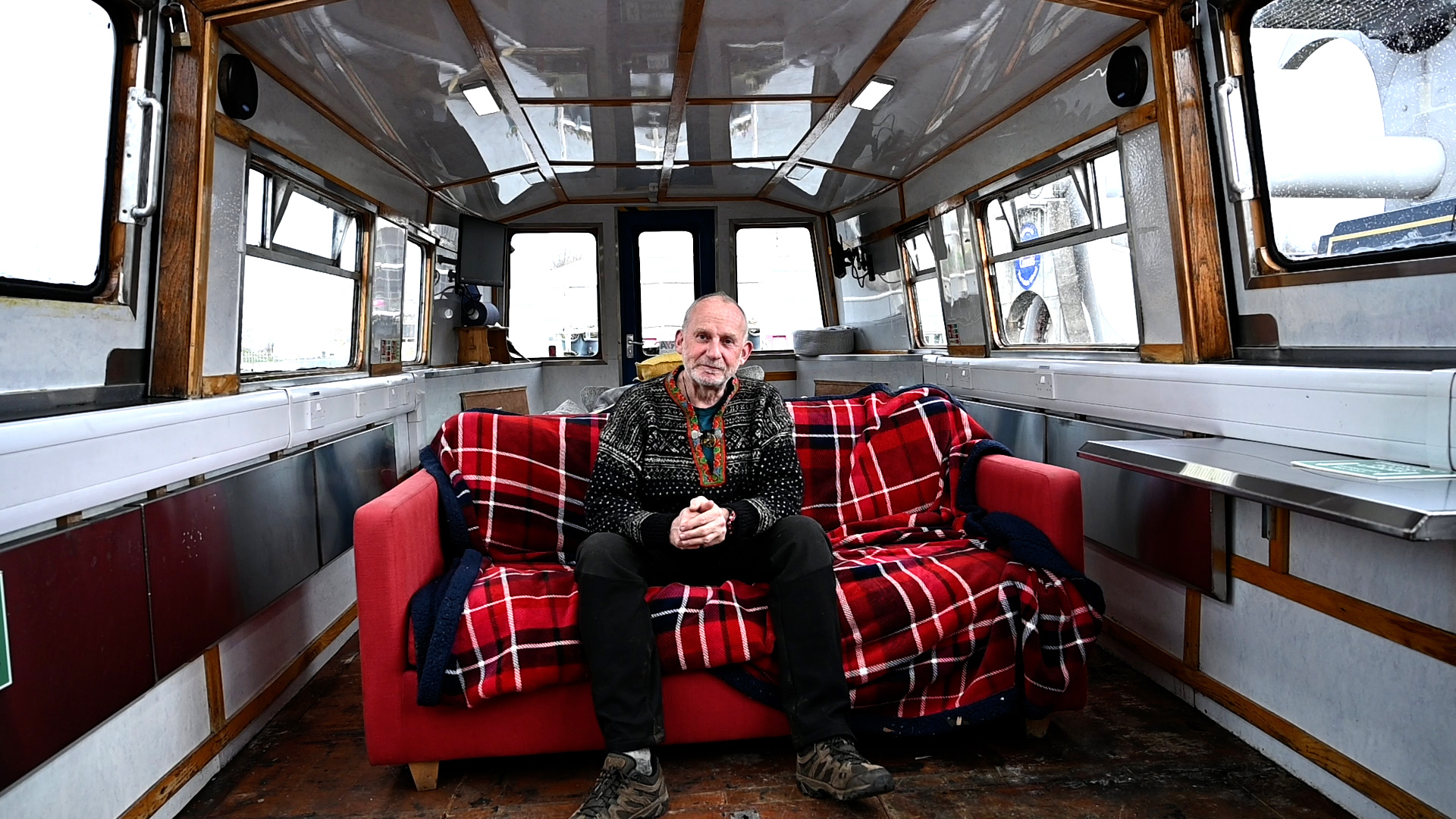A Wheel Like No Other
by Alicia Chiang
Falkirk, U.K.–It may seem like the world’s largest fidget spinner whirling on top of the water. Buzzing with white noise and metallic crackling, a giant gondola slowly lifts a barge 79 feet above the basin where it’s transferred from one canal to another.
The Falkirk Wheel is the world’s first and only rotating boat lift. It’s located midway between Scotland’s two biggest cities. Since its completion in 2002 the wheel has attracted millions of visitors annually.
Gill Kelly has been a skipper on sightseeing boats for 19 years. She has taken many visitors and architecture lovers for a spin.
“It is very energy efficient. We can turn that 20, 30 times, and it doesn’t cost much at all.” Kelly said.
The wheel uses the same amount of energy that would be needed to boil eight household tea kettles (1.5kWh).

The wheel was built to connect the two major canals that provide sea-to-sea connection through Scotland. The Forth And Clyde Canal originates in Boiling Harbor near Glasgow; the Union Canal begins in the heart of Edinburgh. For more than a hundred years before modern roads, the canals formed the main network for transporting coal and metal to and from Glasgow, the primary industrial hub.
“When people move, ideas move. So the Enlightenment moved across the canals; people carried messages; people carried new theories; people could talk,” Lisa Snedden said. She is the Heritage Officer of Keep Scotland Beautiful, an organization that works with the Scottish Canal. “It tells the story of how Scotland became Scotland.”
However, beginning in the mid-19th century, railways–which were much more efficient and economical than boats–made the canals obsolete.
The abandoned canals were overtaken by weeds and waste. In 1963, the Scottish Parliament eliminated all rights to navigate waterways. Scotland’s five canals closed the following year.
Canal enthusiast Dave Park remembers playing alongside the ruins.
“You would have dead dogs, horrible old prams, car wrecks… It wasn’t that kind of a safe place to do these (outdoor) things, but we still did them. You’re going to use what’s on your doorstep.” Park said.
More than most towns along the canal routes, Falkirk had prospered because it was at the crossroads of two major canals. But the demise of the factories by the 1980s, left residents looking for ways to transform their city.
“People said Falkirk has lost its industrial past. It’s not coming back. We’re not going to be manufacturing foundry goods in this town anymore. There’s only one hope for employment in this, and that is to exploit the history and the heritage,” says Ian Scott. He has been the chairperson of Falkirk’s Historical Society for more than 40 years. “And here we’ve got this jewel canal crossing the country. Why are we not doing something about it?”
The new millennium was a time of hope for Scotland. With £78 million, the British Waterways started the Millennium Link Project with hopes of reviving waterway transportation. They needed to dry out the canals, remove decades of trash build-up, and repair broken bridges and locks.
When they were operational in the 19th and 20th centuries, the canals used a set of locks that progressively moved boats from one level to another in a process that took almost a full day. In the 21st century, to solve the problem of reconnecting two canals that are 115 feet apart from each other, the Millennium Link Project solicited designs from architects.
“They could have done something really straightforward. They could have just done something that pulled boats up. But rather than doing that, it was why not be innovative? Why not do something that’s completely different and completely brand new?” Snedden said.
To demonstrate the concept, the designer of the Falkirk Wheel famously submitted a lego model that was later exhibited in London’s Victoria and Albert Museum.
“They had to be really big. They had to be visionary. And they had to be something that would make a big contribution to the economic life.” Scott said. The project developed tourism and envisioned restaurants and inns blooming along the canals.
Since the Falkirk Wheel’s opening in 2002–presided over by Queen Elizabeth II–more than 5.5 million visitors have visited the site. It is now more than a boatlift– there is a water park at the basin and many outdoor water sports and activities around the Wheel. During the spring and summer, holiday-hired barges travel the canal.

Falkirk’s GDP had been on a slow upward growth since 1998. That is especially true after the Kelpies, another Scottish national landmark, opened in 2013. The 100-foot high horse head statues, located about five miles from the wheel, began attracting a million annual visitors within its first year.
Janice Kennedy, Falkirk’s street ambassador who helps small local businesses with day-to-day issues, is happy about the impact of the two national landmarks.
“I would say definitely as a tourist attraction, the town is busier and it’s good for the businesses, it’s good for everybody. And it’s nice to see and speak to people from other countries. And tell them a bit of local history because Falkirk… it’s got a lot of history, as well.” Kennedy said.
However, Scott sees it differently.
“People come in, and they go to see the wheel, and they think, ‘this is great.’ And then they get in a bus, a coach, and they get taken down the road to see the Kelpies.” Scott said. “Then they go home, they go to the hotel, and they don’t come to the town. You know, they miss Falkirk altogether, really.”

“It’s great that they do come, but that doesn’t help the town to develop,” Scott said.
So far, many locals have taken advantage of the newly-cleaned waters and greenery surrounding the wheel. For some, jogging and walking their dogs along the towpath and biking on the hill behind the Falkirk Wheel have become daily rituals.
Lesley Banks is Scottish Canal’s first Artist in Residence. She walked the five canals in Scotland as a part of her project to capture the waterways in paintings.
“There’s quite an etiquette in the towpath that most people are there for a reason, whether it’s running, walking, walking the dog, fishing. And so most people do engage with you,” Banks said, “I think it’s really good for your mental health to walk along the canal.”
Dave Park is the chairperson of a charity–the Port Downie Community Action. He’s also an outdoorsman. Park wants local youngsters to enjoy the benefits that Banks describes.
“I sit here sometimes at night when the Falkirk Wheel lit up, and I have a wee dram, and I just feel good,” Park said. He is saddened that most youngsters in the area had never been on the wheel when he came to work at Falkirk 7 years ago.
Right now, anyone with an inland waterway license is free to use the wheel as often as they want. However, for those who don’t have boats, a ride costs £13.50 for adults and £8.00 for children (5-15). For a single mother with two kids that is not affordable, Park said.
“So at the moment, people with money enjoy this environment here. People that don’t have money are less able to access [it] unless there’s charities doing the kind of work that’s been done.” Park said.

Park is leading the efforts of Port Downie Community Action to renovate barges and promote youth activities so that local kids can enjoy the Falkirk Wheel– for free.
It’s one way the people of Falkirk will benefit from the revival of the canals. But it’s not happening soon enough for Ian Scott.
“And people said to me it’s only ten years, it’s only 20 years, it’s a 50 years job. You just need to be patient.” Scott said. “But then I’m old, you know, so I don’t have much patience for what’s going to happen in 20 years time.”
~ 5.6.2022